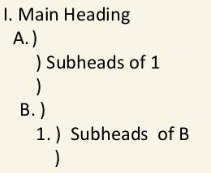ORALCOMM ♡ Principles of Speech
1/10
There's no tags or description
Looks like no tags are added yet.
Name | Mastery | Learn | Test | Matching | Spaced |
|---|
No study sessions yet.
11 Terms
Principles of Speech Writing
Begin with tried and opening devices
Proceed with highlights
End with crisp closers
Analyze the audience
Outline your speech
Follow the conventions of a sentence outline
Organize the speech content
Opening devices
Statement of the Topic
An Interesting Story
Jolting Statement
Statement of the Importance of the Topic to the Audience
Challenging Question
Significant Question
Complimentary Reference
Quotation
Humorous Anecdote
Illustration
Crisp Closers
General Statement
Apt Quotation
Practical Suggestion
Striking Statement
Encouraging Message
Summarize your Speech
Appeal
Inducement
Analyze the Audience
manner of speech delivery must be adapted to audience
factor that will improve your adaptation: feedback
ability to know, by looking at your audience
whether or not they have heard, seen, or understood the message
Carson and Mayers
Maintain a sense of humor to sustain or revive interest.
Make vocal adjustments to recapture your audience.
Handle or ignore unexpected distractions.
Reinstate your point if your audience aren’t getting it.
trying not to repeat the same terms
simplifying your language
thinking of an example or an analogy
Outline your Speech
Should begin with a title of the script.
Followed by a guiding principle which summarizes the main idea of the speech.
Introduction, the Body, and the Conclusion should be written in the form of concrete statements.
The parts of the outline, heads and subheads should be labeled by alternating figures and letters correctly punctuated and indented as shown.

Organize the Speech Content
Chronologically, according to time. Explain what happened first, then second, then third.
“Past, Present, Future” approach.
Order your message by logic. One way to do this is to use the “cause and effect” approach.
By using the comparison approach.
The PGP approach: particular, general, and back to particular.
Do NOT make your organization too complex.
Principles of Speech Delivery
Perception: stop trying to be great public speaker
Perfection: when you make a mistake, no one cares but you
Visualization if you can see it, you can speak it
Discipline: practice makes perfect good
Description: make it personal
Inspiration: speak to serve
Anticipation: always leave your audience wanting more
Elements of Poetry
Rhyme
Alliteration
Simile
Metaphor
Pair antonyms
Passive
audience should be informed of some of the guest speaker’s achievement
Active
let the audience know some of the guest speaker's achievements